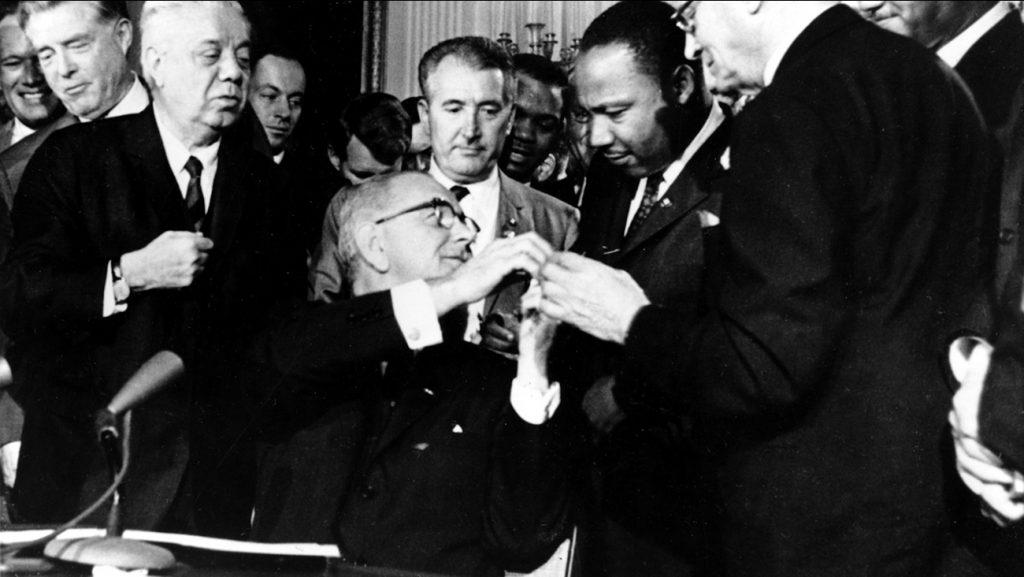
In the coming days, the Republican-led Senate Judiciary Committee will begin its full-Covid press to approve the originalist Judge Amy Coney Barrett to the Supreme Court of the United States. Her lovely autumn nomination ceremony in the White House Rose Garden was a family affair, full of legal textualist fans who spoke kind, wellworded tributes. The ceremony has, in the shortest of hindsights, turned out to be a superspreader event, one that has exposed a great many attendees and their families to the coronavirus. It is a textbook case for the contact tracers, whose earnest calls to the White House have gone unanswered.
Those who have tested positive for Covid-19 now include Republican members of the Senate Judiciary Committee, whose quarantine now threatens the majority required to affirm Barrett; the President of the Catholic university where Barrett went to law school and now teaches; Kayleigh McEnany and four of her deputy press secretaries as well as several White House reporters and correspondents; anti-immigrant visionary Stephen Miller; former senior advisor KellyAnne Conway, who in turn has given the virus to her own family; senior members of the Trump family, including the First Lady and the couple’s quasi-daughter-wife Hope Hicks, who may or may not be patient Zero; and of course the President himself, whose doses of dexamethasone may or may not have been prescribed for covid pneumonia, but which almost certainly supercharge the President’s penchant for chaos, grandeur and mania. Getting less press: at least two members of the White House housekeeping staff, whose thankless, nameless job it is to contain the President’s now toxic abjection.
If Judge Amy Coney Barrett survives this grim fifth act of near-Shakespearean tragedy, and becomes the one to replace the legendary Justice Ruth Bader Ginsburg, Barrett is sure to move the Court’s political disposition quite far to the right, in large part because of her interpretive focus on textualism, which favors literal meaning, and on originalism, which freezes the meaning of the Constitution at the moment of its framing in 1787. Ginsburg represented and continues to represent a more expansive version of constitutional law, one that embraces the self-determination of women, the bond of gay and lesbian marriage, and the concept of equal protection. The Court has in the last 60 years broadened the conception of who might stand and be counted as a fully formed, enfranchised American life, and it has also varied the very terms of how American lives might be lived. With Barrett on the bench, we would soon see a more restrictive interpretation of the Constitution, one that would take back and diminish the expansive historical ground defined by the decisive power of the Supreme Court.
It is likely that Barrett would align herself with Justice Samuel Alito, who was appointed by George W. Bush in 2005. Alito’s conservative judgment cloaks itself in ideas of textualism and originalism, the legal theories that aim to interpret the Constitution literally, in its own words, as those words signified at the time they were written.
On June 15, 2020, the Court announced its decision in the case Bostock vs. Clayton County, Georgia. Gerald Bostock, a county employee, sued the Georgia county after he was fired for playing in a gay recreational softball league. Two other individuals joined the suit: Daniel Zarda, a skydiver whose employer Altitude Express fired him after he mentioned that he was gay, and Aimee Stephens, who was hired as man at a funeral home in Michigan, but was fired after she revealed her intent to live as a woman. The lawyers representing these individuals appealed to Title VII of the Civil Rights Act, signed into law in 1964 by President Lyndon B. Johnson, which prohibits exployment discriminationon on the basis of race, color, religion, sex, or national origin.

The Court majority decided for Bostock and his fellow petitioners. The LGBT community rejoiced. In his majority opinion, the textualist Justice Neil Gorsuch zeroed in on the word “sex” and wrote:
Today, we must decide whether an employer can fire someone simply for being homosexual or transgender. The answer is clear. An employer who fires an individual for being homosexual or transgender fires that person for traits or actions it would not have questioned in members of a different sex. Sex plays a necessary and undisguisable role in the decision, exactly what Title VII forbids.
Bostock was decided by a robust majority of 6-3, with Chief Justice Roberts joining Gorsuch and the liberal wing of Justices Ginsburg, Breyer, Kagan and Sotomayor. It is worth taking a closer look at Gorsuch’s reasoning, remembering all the while that he is a Trump appointee and that he was in fact appointed to gratify the worldviews of the long-suffering Christian right, a key voting block for the President. The argument for Bostock coheres around two hypothetical examples, the first of a gay employee, the second a transgender employee.
Consider, for example, an employer with two employees, both of whom are attracted to men. The two individuals are, to the employer’s mind, materially identical in all respects, except that one is a man and the other a woman. If the employer fires the male employee for no reason other than the fact he is attracted to men, the employer discriminates against him for traits or actions it tolerates in his female colleague.
Or take an employer who fires a transgender person who was identified as a male at birth but who now identifies as a female. If the employer retains an otherwise identical employee who was identified as female at birth, the employer intentionally penalizes a person identified as male at birth for traits or actions that it tolerates in an employee identified as female at birth. Again, the individual employee’s sex plays an unmistakable and impermissible role in the discharge decision.
Taken as a whole, the wording and arguments of the Bostock decision, it turns out, represent an extraordinary case study not just of civil rights, but also of our expansive and restrictive uses of language as a nation, all swirling around the word “sex.” The word “sex” in 1964 very likely did not carry the elaborate range of meanings that it carries today. But the word did form the basic cognate for multiple expressions, even then. “Sexuality” for example, as a word has tracked a remarkable linguistic and ethnographic expansion, evolving at least since the nineteenth century, when it began to gather up a tremulous and unsettled collection of ideas, identities, behaviors, styles, and practices, at the very time our modern sense of “homosexuality” also crystallized and began to circulate in society.
There were two dissenting opinions in Bostock vs. Clayton County, one by Justice Brett Kavanaugh, the other by Justice Alito. Justice Clarence Thomas joined Alito’s decision, which like Gorsuch’s majority opinion, brings “sex” into sharp focus as a textualist argument. Alito’s dissent lashes at the Gorsuch decision for not exerting an approach that is textualist enough, for “flying the textualist flag” without restricting the meaning of sex to its usage in 1964, when the Civil Rights Act was ratified. Here is how Alito frames the textualist approach in Bostock:
Thus, when textualism is properly understood, it calls for an examination of the social context in which a statute was enacted because this may have an important bearing on what its words were understood to mean at the time of enactment. Textualists do not read statutes as if they were messages picked up by a powerful radio telescope from a distant and utterly unknown civilization. Statutes consist of communications between members of a particular linguistic community, one that existed in a particular place and at a particular time, and these communications must therefore be interpreted as they were understood by that community at that time.
To correct the alleged faulty textualist record, Alito launches into a passionate study of historical linguistics, citing lengthy, closely examined entries of the dictionary as well as the categories of the 1952 imprint of the Diagnostic and Statistical Manual of Mental Disorders, commonly referred to as the “DSM.” Subsequent, updated editions of the DSM have been regularly published by the American Psychiatric Association, most recently in 2013. Armed with the dictionary and an outdated DSM, Alito details “the spectacular clash” between the linguistic conventions and psychiatric designations of 1964 and those of 2020. The dominant “meaning of ‘sex’” in 1964 was “just reference to the categories of male and female.” In all the meanings Alito notes in The American Heritage Dictionary, the definition of sex is “sexual intercourse,” sometimes “coitus.” Only one definition, namely “necking passionately,” does not presume precisely heterosexual players. Dictionaries, “primarily defined the word ‘gender’ by reference to grammatical classifications.” Likewise, Alito takes us through a series of legal statutes that also address sex discrimination, all of which underscore the dominant meaning of sex as biological.
Alito’s references to the outdated DSM, taking the 1952 version to be relevant in 1964, are more painful to read in 2020. And here we see the edifice of the texutalist-originalist conceit begin to crumble. Homosexuality in 1952 was understood as a “sexual deviation” and “a type of sociopathic personality disturbance” and “sodomy was a crime in every State but Illinois” and then included almost any nonreproductive sexual act, which must have incriminated most heterosexuals of the time as well. Alito goes on to explain how homosexuals were then excluded from the military and from teaching and from many other professions. One must ask the question: why is it so important that Alito plant and fly his textualist flag, given that his documentary research of 1964 and 1952 delivers a description of rank discrimination?
But let’s also ask, flying the textualist flag in winds perhaps stronger than Alito’s, in accounting for the cultural-linguistic meanings of sex in 1964, why should we shy away from the historical fact that the Civil Rights Act only very slightly predates the second wave of the feminist movement? That it also barely precedes the advent of the gay-lesbian-bisexual-transgender movement? Both became powerful generators of linguistic invention, especially in the realm of sex. Betty Friedan, for example, published The Feminine Mystique in 1963, and though the book may be vanilla by today’s standards, it began to loosen the assumption that anatomy is ultimately destiny for women, thus beginning the gradual pry of “sex” from “gender.” Likewise, the punitive psychopathology of homosexuality had aready begun to unravel, as subsequent editions of the DSM readily show. These movements stand in far closer cultural and historical proximity to the Civil Rights Act than the DSM of 1952 and bear far more resemblance to our own era than to Eisenhower’s America.
Alito concludes the dissent with a series of speculative scenarios that might arise should Gorsuch’s “sex” stand firm over Alito’s. Some of them seem to hew closely to the world as we live it, others seem to be stoked by more fevered notions. Whether, for example, an employer could be sued for using the wrong pronouns for a gender fluid person, which Alito admits could happen because our language now includes “several different sets of gender-neutral pronouns….and are preferred by some individuals who do not identify as falling into either of the two traditional categories.” Or whether college roommates would be assigned on the basis of biological sex or their gender self-designation. Or whether transgender athletes should participate in contests of their transitioned or pre-transitioned sex.
Let’s loosen Alito’s self-induced constraints for a second. Let’s acknowledge that we have new ways of talking about things, and yes it is easy to make mistakes and stumble over one’s phrases, and catch oneself, or not, before our malaprops strand us in the sex-and-gender weeds. Alito’s dictionary-entry overcompensation may, after all, reveal nothing more than justice-level performance anxiety: the recognition that common phrases in wide circulation are getting quite far ahead of the law. The tight cuffs of textualism will not help him out of the rack, though. Alito, in the text of his decision, does not stop at the bewilderment of novel pronouns. He tiptoes into the women’s bathroom, peering into an uncertain future conditional, and there, in that speculative verbal tense, he conjures a scene.
The Court may wish to avoid this subject, but it is a matter of concern to many people who are reticent about disrobing or using toilet facilities in the presence of individuals whom they regard as members of the opposite sex. For some, this may simply be a question of modesty, but for others, there is more at stake. For women who have been victimized by sexual assault or abuse, the experience of seeing an unclothed person with the anatomy of a male in a confined and sensitive location such as a bathroom or locker room can cause serious psychological harm.
Under the Court’s decision, however, transgender persons will be able to argue that they are entitled to use a bathroom or locker room that is reserved for persons of the sex with which they identify, and while the Court does not define what it means by a transgender person, the term may apply to individuals who are “gender fluid,” that is, individuals whose gender identity is mixed or changes over time. Thus, a person who has not undertaken any physical transitioning may claim the right to use the bathroom or locker room assigned to the sex with which the individual identifies at that particular time. The Court provides no clue why a transgender person’s claim to such bathroom or locker room access might not succeed.
In 1964, it is doubtful a person who would be called ‘transgender’ today would dare use a public restroom, either a men’s or a women’s one. But in 2020, increasing numbers of public bathrooms and changing rooms are gender neutral, and our collective ease with variable sex and gender expression is part of what underlies Bostock. Whether 1964 or 2020, or some time between, a public restroom is quite likely the last place a transgender person is going to want to cause trouble, the last place he or she or they would want to flash his, her, or their pre-, post-, or non-operative bodily sex. The scene that Justice Alito invokes, of aggressive or threatening sexual revelation in the public restroom, belongs squarely in Justice Alito’s fantasy, one that is heightened by the invocation of a traumatized woman, with whom he evidently identifies and who measures an imagined offense according to Alito’s unconsciously textual scale of justice.
Alito’s fantasy has nothing to do with the actual trauma of women as they experience it as real sexual abuse. In this, what genetically native women routinely experience on the street, and really everywhere in society, shares much with the experiences of transgender women. But it is just as important to underscore that it is far more likely, in reality, for a transgender person to be verbally abused and violently assaulted in a public restroom by someone whose fantasies of traumatic offense resemble those of Alito, by someone who would, quite strictly, abide by the Merriam Webster dictionary definition of sex as it was written in 1964.

